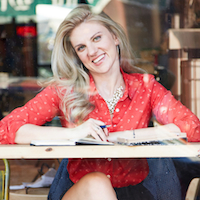In my work as a holistic nutritionist, I’ve helped hundreds of frustrated and confused people figure out why their diet isn’t working.
They’ve tried a myriad of fads, which work for a while, but inevitably, the frustration doubles as the pounds pile back on and their search resumes for the next quick fix.
There are a few simple reasons for this infuriating cycle.
First of all, most diets are not designed to be sustainable. Living a life free from grains or fat doesn’t work long term and no one has hours to spend counting calories or sticking to some specific formula.
The more prevalent flaw in diets is that they only address the what of eating, completely neglecting the equally important factors of when and why.
The foods to eat for optimal health and a slender waistline are actually super simple and intuitive. We don’t need a diet to outline it for us.
We should be eating more greens, vegetables, and fruit.
As for all other foods, moderation is the most effective and sustainable solution.
Eat less meat and more fish and beans.
Eat less refined grains and more whole grains like quinoa, brown rice and buckwheat.
Eat less sugar and more healthy fats like coconut oil, avocado and nuts.
Honestly, a part of us already knows this!
The what is so simple.
So, then, why are vibrant energy, rosy-cheeked health and an effortlessly flat belly elusive?
One answer lies in when we eat.
We live in a dinner-centric culture. We consume the majority of our calories in the latter half of the day, when our digestion and metabolism are slower with a lower need for fuel.
When we eat a salad or sandwich for lunch, we’re only giving our bodies enough fuel to get through three or four hours of our busy day. This means that come 4pm, our blood sugar crashes and we start trolling around the kitchen for a quick pick-me-up.
Blood sugar imbalance creates irritability, fatigue and headaches as well as increased stress and overwhelm. Low blood sugar also causes us to overeat in the evening, a time of day when our bodies are least able to burn off calories.
When we eat our biggest meal at dinnertime, we don’t get a chance to properly digest or metabolize our meal.
Especially if we’re eating slow-burning foods like meat, dairy or grains. This makes our body store fat and gain weight. We wake up exhausted, in desperate need of a cup of coffee or sugar fix to start the day.
The solution is actually simple and intuitive.
Eat our biggest meal at lunchtime, when we’re the most active and need the most energy.
Then, eat a lighter, easily digestible meal at dinnertime, when our system is naturally winding down.
Makes a lot of sense, right?
However, there’s still one missing piece to the healthy eating puzzle, which all diets ignore.
We may be eating the healthiest foods at the best times of the day yet, we can’t seem to beat those cravings.
That’s because we have to get to the root of why we’re eating.
We eat for many reasons other than hunger.
We may be bored, tired, sad or stressed.
Food can be a quick fix to temporarily mask these problems.
Food is not a solution.
When we engage in emotional eating, we are letting food control us.
We become victims.
We lose our power.
The key element to conquering food drama for the rest of our lives is connecting to why we’re eating. When we find ourselves eating between meals, reaching for foods that we know we’ll regret later or continuing to eat even after we’re no longer hungry, we need to take a moment to ask ourselves what’s really going on.
What emotion are we trying to mask using food?
Only when you take the time to connect to what you’re really craving in your life, can you finally take back that power that food has over you.
This three-step process of transforming the what, when and why of our eating will change our lives.
Imagine being free from dieting, forever.
Imagine trusting our gut about what to eat and how to take care of ourselves.
Imagine understanding our cravings and knowing what to do about them.
Eating right is easier and more intuitive than we ever thought possible!
~
~
Love elephant and want to go steady?
Sign up for our (curated) daily and weekly newsletters!
Editor: Ashleigh Hitchcock/Editor: Emily Bartran
Photo: Author’s Own



Read 1 comment and reply